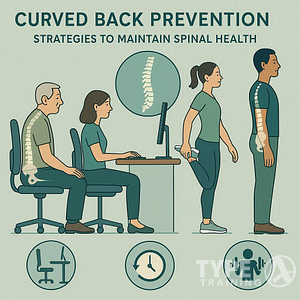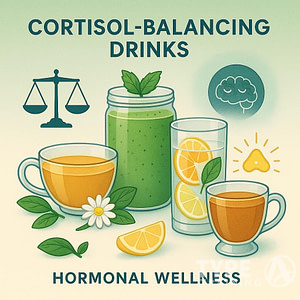If you’re engaged in fitness or health circles, understanding macronutrients is key to optimizing your diet. Carbohydrates, proteins, and fats make up these vital components of nutrition, each playing an indispensable role in your body’s function. While debates may swirl around the perfect balance of these nutrients, it’s crucial to recognize that each type is necessary for maintaining health and supporting physical performance.
To tailor your intake to your personal lifestyle, it’s helpful to know how each macronutrient contributes to your well-being and how your activity level affects your nutritional needs. Including a variety of foods rich in each macronutrient, category can ensure a balanced and effective approach to fueling your body.
Understanding Essential Nutrients
Your body needs certain nutrients in substantial amounts daily to function properly. Known as macronutrients, these include carbs, proteins, and fats.
Popular posts:
Carbohydrates: Your Energy Source
Carbohydrates are the primary fuel for your body, breaking down into glucose which is then used to produce energy.
Proteins: Building and Repair
Proteins are crucial for building muscle, producing immune cells, and repairing tissues.
Fats: Nutrient Absorption and Hormone Production
Fats are necessary for absorbing vitamins, creating hormones, and providing long-term energy.
Remember, a balanced diet comprises all these macronutrients to support your overall health.
Further Exploration
- Carbs: Not just energy — A comprehensive look at carbohydrates.
- Proteins: Beyond muscle — Understanding proteins and their functions.
- Fats: The balance of nutrients — The role of fats in a healthy diet.
Nutritional Building Blocks: Macros vs Micros
Within the realm of nutrition, two fundamental categories exist: macronutrients and micronutrients. Macronutrients, which include carbohydrates, fats, and proteins, are the primary sources of energy for your body, measured in grams. They provide calories and are essential for growth, metabolism, and other bodily functions.
On the flip side, micronutrients are the intricate details within your diet, imperative yet required in lesser amounts:
- Vitamins: Vital for immune function, bone health, and beyond. Key players involve Vitamin A, C, D, E, K, and the B-complex.
- Minerals: Elements crucial for heart health, muscle function, and nervous system support. These include calcium, selenium, and potassium.
Though micronutrients don’t directly fuel your body like macronutrients, they are indispensable for converting macros into energy, supporting vital processes such as muscle contractions and regulating your gene expression.
Table of Daily Requirements:
| Nutrient Type | Examples | Daily Requirement |
|---|---|---|
| Macronutrients | Carbs, Fats, Proteins | Measured in grams |
| Micronutrients | Vitamins, Minerals | Measured in mg or mcg |
Both macro and micronutrients work in concert to sustain your health and maximize your body’s performance. Without micronutrients, your body couldn’t efficiently process macronutrients. They’re also instrumental in protecting against oxidative damage and sustaining cellular health. Making every calorie count includes paying attention to both categories for a balanced diet and optimal health.
Understanding Macronutrient Significance
Carbohydrates: Your Energy Powerhouses
Carbohydrates serve as your body’s preferred source of immediate energy. Foods like oatmeal and bananas, when consumed, are transformed into glucose, a simple sugar that’s essential for everyday bodily functions. Glucose provides the ATP energy your cells need for everything from muscular contractions during your gym sessions to the synthesis of proteins for tissue repair. Any spare glucose is stored as glycogen in the liver and muscles, which acts like your body’s energy reserve for when you need an extra boost during activities like high-intensity training or endurance sports.
Having adequate carbohydrates is not only about energy. These macronutrients help by especially sparing protein resources, allowing them to be used for building and repairing muscle mass rather than energy, contributing to muscle preservation and growth. For those with rigorous exercise regimens, it’s important to include carbs in pre- and post-workout meals for optimal performance and muscle recovery.
Contrasting with refined carbs, foods high in unprocessed carbs are also rich in fiber—an ally in maintaining steady blood sugar levels, helping you stay full longer, and fostering digestive health. They offer a wealth of micronutrients and antioxidants that promote overall well-being, so choosing unrefined sources like vegetables, fruits, and whole grains is beneficial for staying energized and healthy.
Protein: Building and Repairing Your Body
When you consume proteins, they break down into amino acids and join the body’s intricate process of building and repairing tissues—from muscle fibers to skin and bone structure. Adequate protein intake is vital for strength building and injury prevention. It also plays a pivotal role in the maintenance and increase of muscle mass, which is not just important for physical performance but also crucial in warding off conditions like age-related muscle loss.
Muscles being metabolically active, a higher muscle mass can increase your caloric expenditure, even at rest. For muscle growth and repair, especially after workouts, pairing protein with carbohydrates and healthy fats can facilitate muscle protein synthesis.
Protein’s role extends to enhancing blood sugar stability following meals, supporting your immune system, and being a fundamental component of various enzymes governing body functions. While animal proteins provide a complete set of essential amino acids, a diverse intake of plant proteins can equally meet your nutritional needs and contribute to longevity. When it comes to processed meats, it’s wiser to opt for less processed protein sources to reduce the risk of chronic diseases.
Fats: Essential for Health and Vitality
Though carbs and proteins often steal the spotlight in fitness discussions, fats are equally critical for maintaining health. They assist in moderating blood sugar levels and promoting a feeling of fullness, making them a key component for anyone’s diet. Dietary fats, once digested, are broken down into fatty acids—vital for cellular integrity, the production of key signaling molecules, and as a dense source of energy.
Fats support the absorption of fat-soluble vitamins, such as A, D, E, and K, and contribute to cell membrane flexibility, impacting cell signaling. Essential fatty acids are used to generate prostaglandins, which are crucial for regulating inflammation, blood flow, and tissue repair. This highlights the importance of including healthy fats in your diet, such as those found in avocados, nuts, and olive oil. These fats not only support the structure and function of your body but contribute to a holistic approach to health and fitness.
Essential Nutrient Sources in Your Diet
Sources of Carbohydrates
Place an emphasis on unrefined carbohydrates that bring along the benefits of dietary fiber and essential phytonutrients. For your carbohydrate intake, consider incorporating:
- Whole grains: Oatmeal, brown rice, and wheat berries.
- Fiber-rich breads and pasta: Look for whole-grain breads, pastas, and wraps.
- Vegetables with low starch content: Include leafy salads, steamable broccoli or asparagus, and a colorful variety of bell peppers and tomatoes.
- Starchy vegetables: Sweet potatoes, squash, and corn add delicious variety.
- A spectrum of fruits: From bananas and berries to apples and oranges.
- Legumes: Such as chickpeas, kidney beans, and lentils.
Protein-Rich Foods
For proteins, opt for a diverse mix of plant-based options alongside quality animal products, avoiding heavily processed meats. Good protein sources include:
- Animal sources: Choose from a selection of meats, poultry, fish, and eggs.
- Dairy: Greek yogurt and cottage cheese are excellent picks.
- Plant proteins: Tofu, tempeh, and edamame are solid choices.
- Nuts and seeds: Almonds, pistachios, and natural nut butters can serve as nutritious snacks.
- Grains with protein: Quinoa and wheat berries can be great additions.
- Supplements: Select high-quality protein powders with minimal additives.
Healthy Fats to Include
Seek out foods with unsaturated fats, particularly focusing on those with omega-3 and omega-6 fatty acids, while limiting saturated fats. Here’s where to find healthy fats:
- Oils: Use extra virgin olive oil and avocado oil for cooking and dressings.
- Whole food fats: Avocados, olives, and a variety of nuts fit in here.
- Seeds: Incorporate hemp, chia, and flax seeds into meals.
- Seafood: Salmon and sardines are packed with beneficial fatty acids.
- Eggs: Include them as a nutritious source of fats.
Optimal Macronutrient Distribution
Considering Macro Tracking
Tracking macronutrients, or “macros,” involves monitoring the percentage of carbohydrates, proteins, and fats in your daily diet. Tools like MyFitnessPal can simplify this process, helping ensure you meet your specific dietary goals. Determining the most beneficial macronutrient split for your health can be tailored to your individual needs, rather than adhering to rigid standards.
Acceptable Macronutrient Distribution Ranges (AMDR) provide general guidance, suggesting adults consume:
- 45–65% from carbohydrates
- 20–35% from fats
- 10–35% from proteins
Your protein needs are often calculated based on body weight, with a general recommendation of 0.8 grams per kilogram. This amount may vary for active individuals, who could require substantially more to support their higher activity level.
For those considering a ketogenic diet, where the focus is on fats with very low carbohydrate intake, or a high-protein regimen, an understanding of how to accurately measure and track these nutrients becomes more crucial. The utility of a food scale can come into play when precise nutrient intake is necessary.
Activity level greatly impacts macronutrient needs:
- Low activity: 1.0 gram of protein per kilogram of body weight
- Moderate activity: 1.3 grams per kilogram
- Intense activity: 1.6 grams per kilogram
Women may need to adjust their macronutrient intake during different phases of their menstrual cycle, with a shift towards carbohydrates in the follicular phase and an increased need for fats and proteins in the luteal phase.
Personal macro ratios might shift over time. Pay attention to your body’s responses—such as changes in athletic performance, body composition, energy, and mood—and adjust your intake as needed.
Counting macros isn’t essential for everyone. For general health, a balanced diet tailored to personal sensations of hunger and satiety, as well as health objectives, is often recommended. However, individuals aiming for specific health outcomes or managing certain medical conditions may find it useful to closely monitor their macronutrient intake. If you decide to take a closer look at your macros, consider consulting with a registered dietitian to develop a plan that aligns with your unique needs.
Tips for Balancing Macronutrients
When creating your meals, aim to fill half your plate with fruits and vegetables. Allocate one-quarter for protein-rich foods such as lean meats, legumes, or tofu, and reserve the remaining quarter for whole grains or starchy vegetables like brown rice or sweet potatoes. Adding a moderate amount of fat for cooking, like olive oil or avocado, can round out your meal.
For snacks, it’s less about strict percentages and more about ensuring a mix of carbs, proteins, and fats. Some balanced snack choices include:
- An apple and string cheese for a blend of fiber and protein.
- Whole wheat toast topped with peanut butter and banana slices for energy and satiety.
- A homemade trail mix combining nuts, seeds, and a sprinkle of dried fruit for a nutritious punch.
By following this pattern, not every meal needs to be perfect, but over time, you’ll better support body weight management, capable of promoting both fat loss and muscle gain. Adjust portions as needed to align with personal goals, whether you aim to lose weight or simply maintain a healthy lifestyle.
Key Insights on Nutrition for Active Lifestyles
Incorporating a variety of food types into your meals is key to fueling your body properly, especially when living an active lifestyle. Choose carbohydrates like whole grains and fruits to keep your energy levels up for a productive gym session. They’re not only your primary energy source during high-intensity workouts but also help protect your muscles from being broken down to provide energy.
Proteins are vital for post-exercise recovery; they help repair tissue damage and support muscle growth. Including lean meats, legumes, or dairy in your diet can enhance muscle repair and maintain consistent blood sugar levels, which is beneficial for athletes requiring steady energy.
Healthy fats should not be overlooked, as they’re necessary for creating cellular structures and absorbing some vitamins. Options like avocado, nuts, and seeds contribute to hormone production and may reduce inflammation—an advantage for anyone engaged in regular physical activity.
Remember to hydrate with water, which assists in all bodily functions and is especially crucial when you’re active and sweating. Limit alcohol, which can interfere with muscle recovery and hydration levels.
- Carbohydrates: Energy for workouts, preserve muscle, source of nutrients.
- Proteins: Tissue repair, muscle gain, stable blood sugar, immune support.
- Fats: Cell health, nutrient absorption, hormonal balance, inflammation reduction.
- Water: Essential for bodily functions, promotes hydration.
- Alcohol: Best to consume in moderation due to its potential negative impact on fitness goals.
Adjusting your intake based on activity level and how your body feels is crucial to support your fitness journey effectively.
Frequently Asked Questions
Essential Macronutrients for Fitness Novices
For those starting their fitness journey, it’s crucial to understand that protein, carbohydrates, and fats are the foundational nutrients your body requires for energy, muscle repair, and overall health. Proteins, made up of amino acids, are pivotal for muscle building and repair. Carbohydrates are your body’s primary energy source, essential for fueling workouts. Fats are important for hormone production, energy storage, and nutrient absorption.
Calculating Daily Macronutrient Needs for Beginners
To determine your daily macronutrient needs, you’ll want to start by finding out your total daily energy expenditure (TDEE) which includes your basal metabolic rate and energy expended through activity. Once you have your TDEE, you can allocate a percentage of your total calories to each macronutrient. Typically, a common starting point might be 50% of your calories from carbohydrates, 30% from protein, and 20% from fats.
Ideal Macronutrient Balance for Weight Loss
Those embarking on weight loss might adjust their macronutrient ratio to help manage calorie intake. A common approach could be:
- Protein: 35-40%
- Carbohydrates: 30-35%
- Fats: 25-30%
This ratio helps maintain muscle mass while promoting fat loss, as proteins can be more satiating and thermogenic.
Nutrient-Dense Foods for Weight Loss
A list of foods high in macronutrients that could support weight loss includes:
- Proteins: Chicken breast, turkey, tofu, and legumes
- Carbohydrates: Leafy greens, berries, sweet potatoes, and whole grains
- Fats: Nuts, seeds, avocado, and olive oil
These foods can make up a balanced diet that provides energy and helps with maintaining fullness.
Counting Macros for Muscle Gain
As a beginner aiming to gain muscle, it’s vital to consume ample protein for muscle repair and growth. Tracking macros can be simplified by:
- Eating a source of protein with every meal
- Utilizing apps or tools to log food intake
- Preparing balanced meals that include all three macronutrients
Tracking Macronutrients: Strategies for Fitness Newcomers
For those new to tracking macronutrients, consider these strategies:
- Use smartphone apps designed for macro counting
- Plan your meals in advance to meet macro targets
- Read nutritional labels to learn about macronutrient content
- Measure servings using common household items to estimate portions
Keeping a consistent routine and regularly monitoring your intake will be beneficial for accurately hitting your macro targets.










